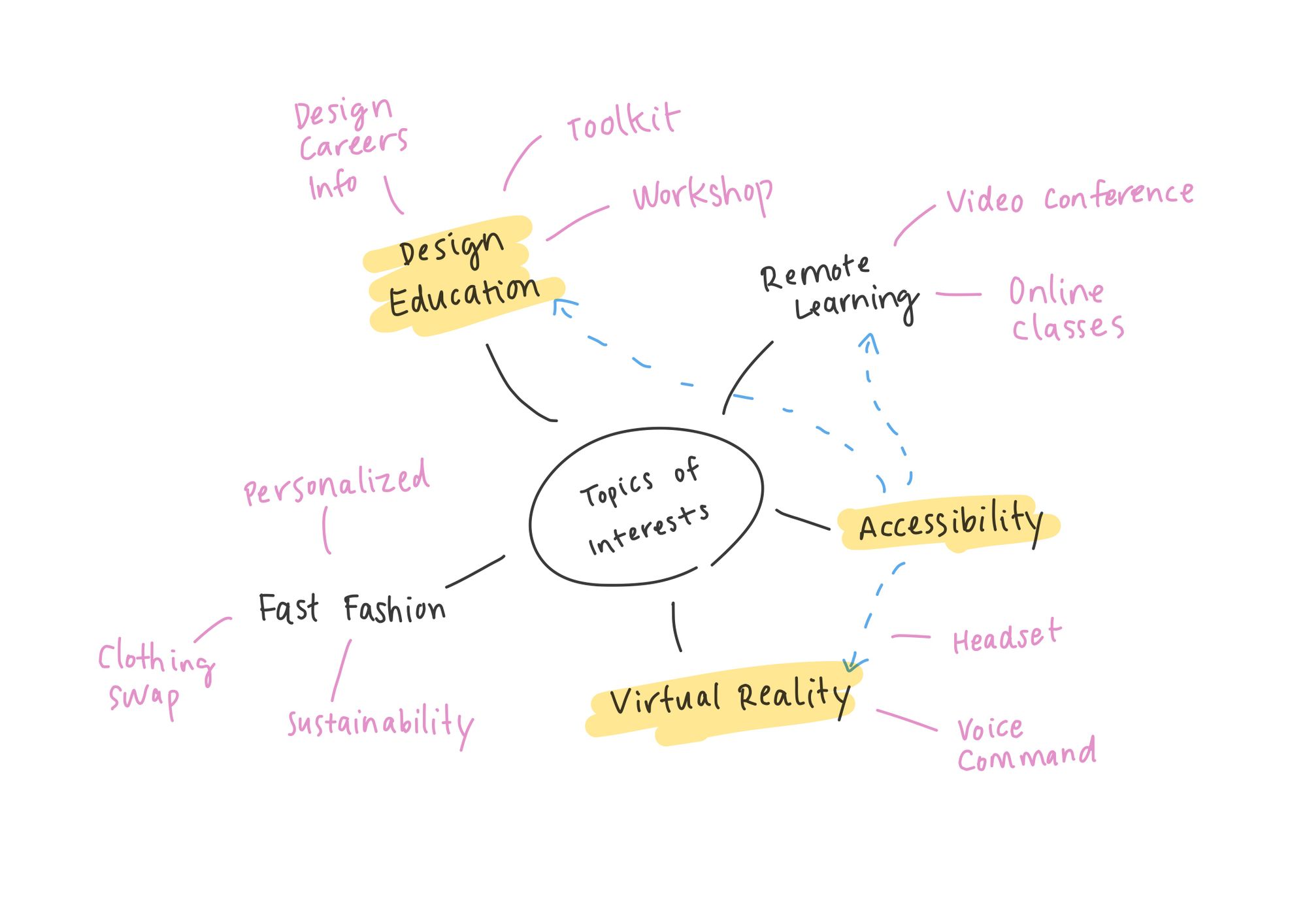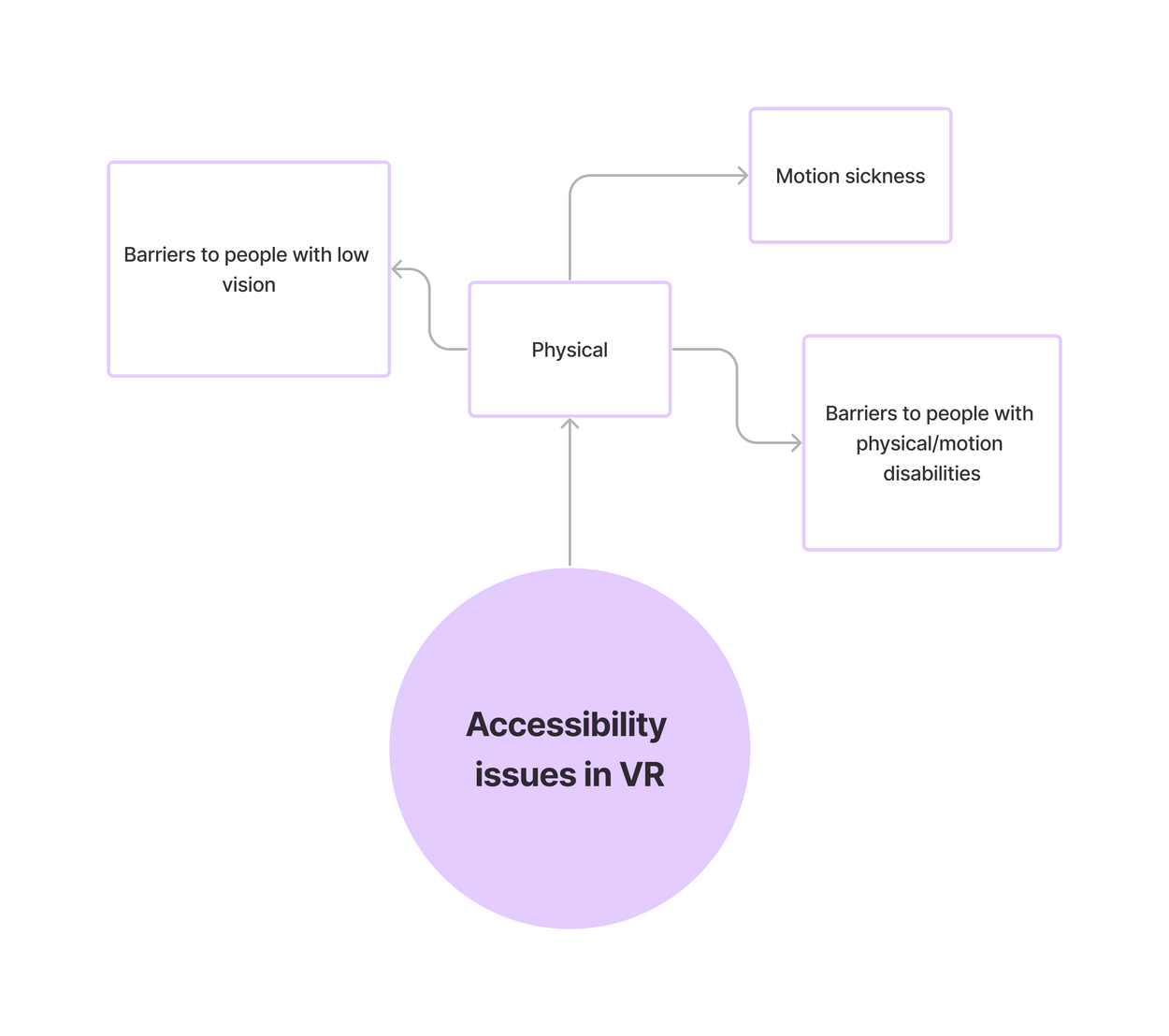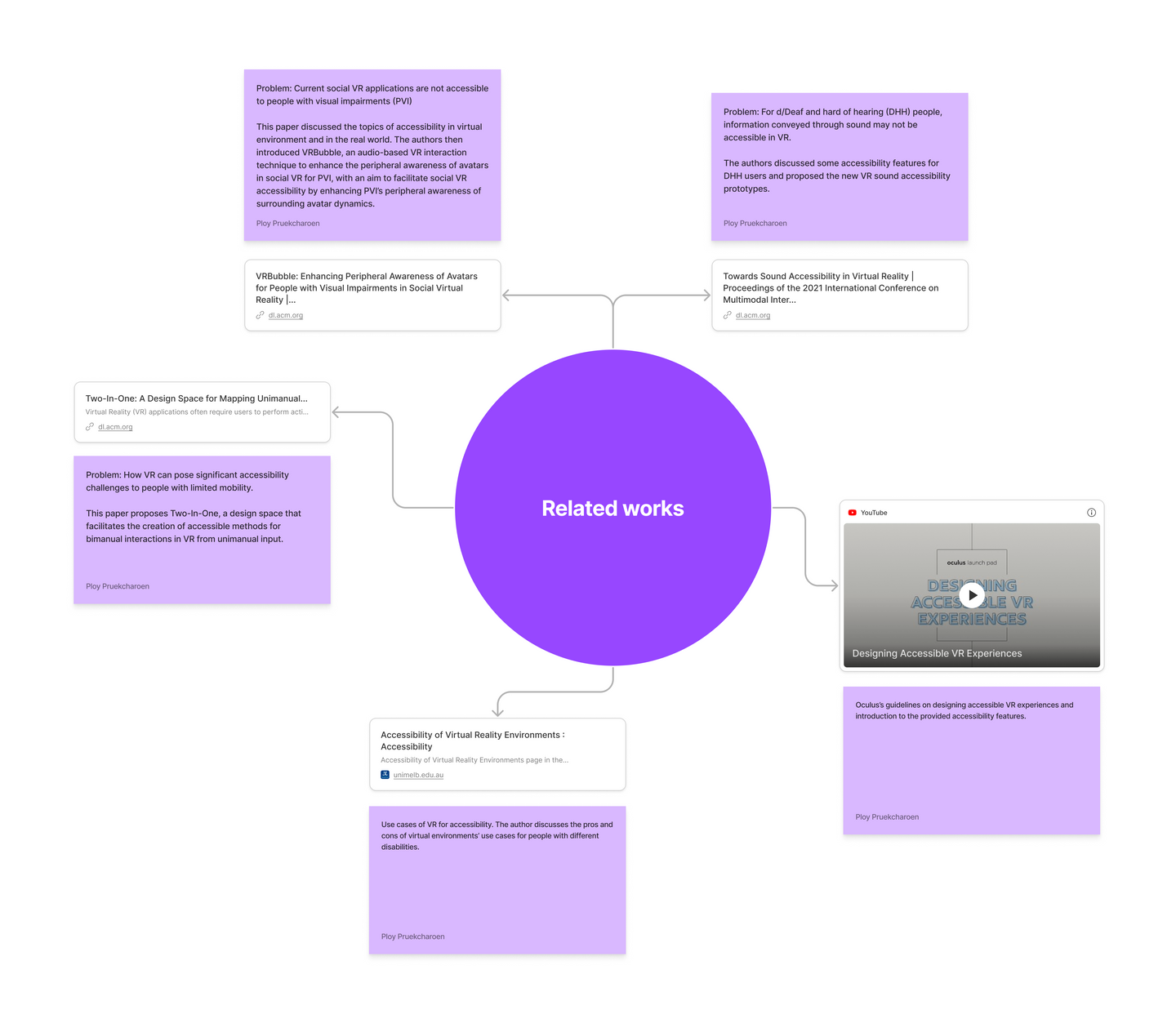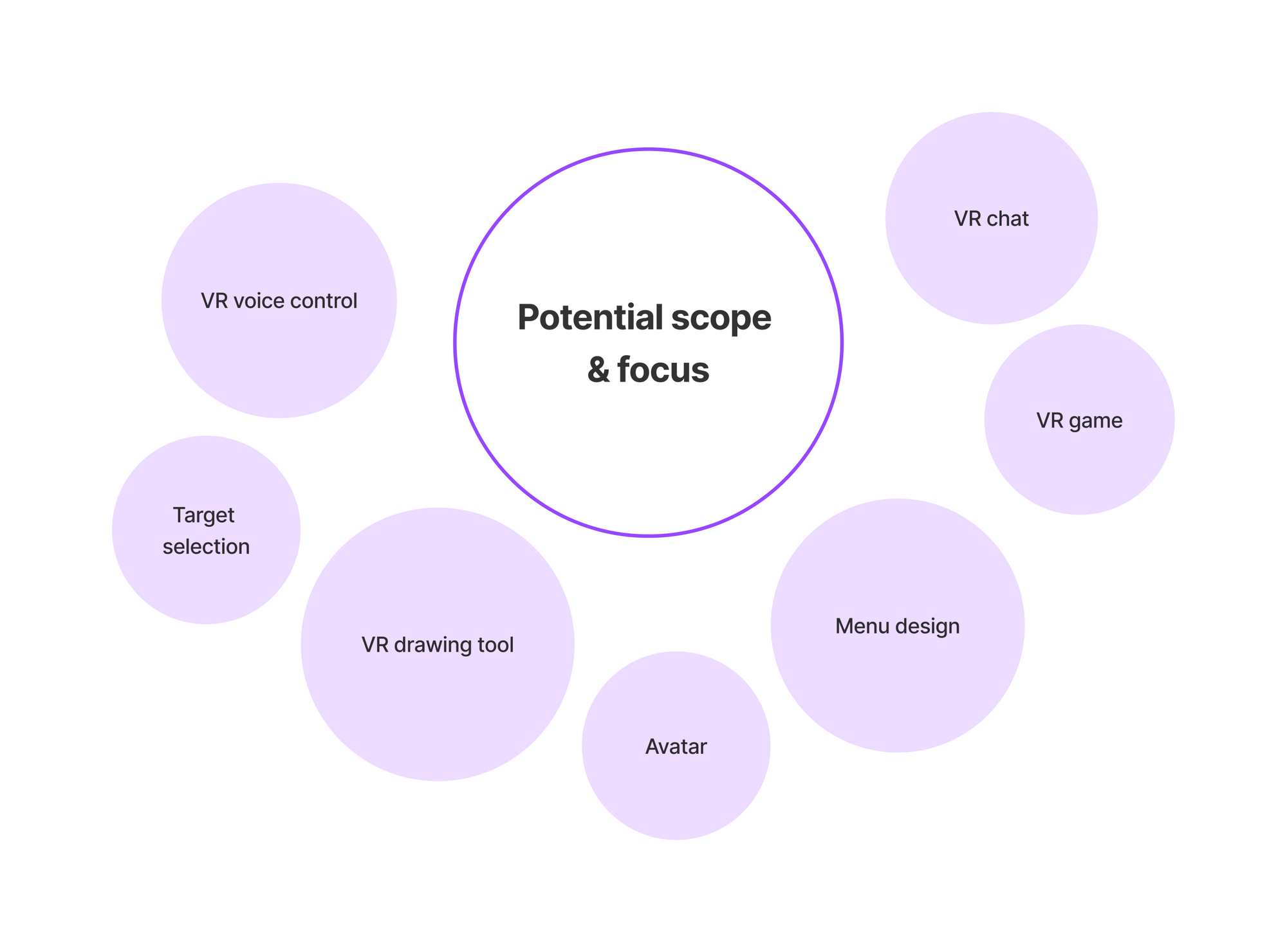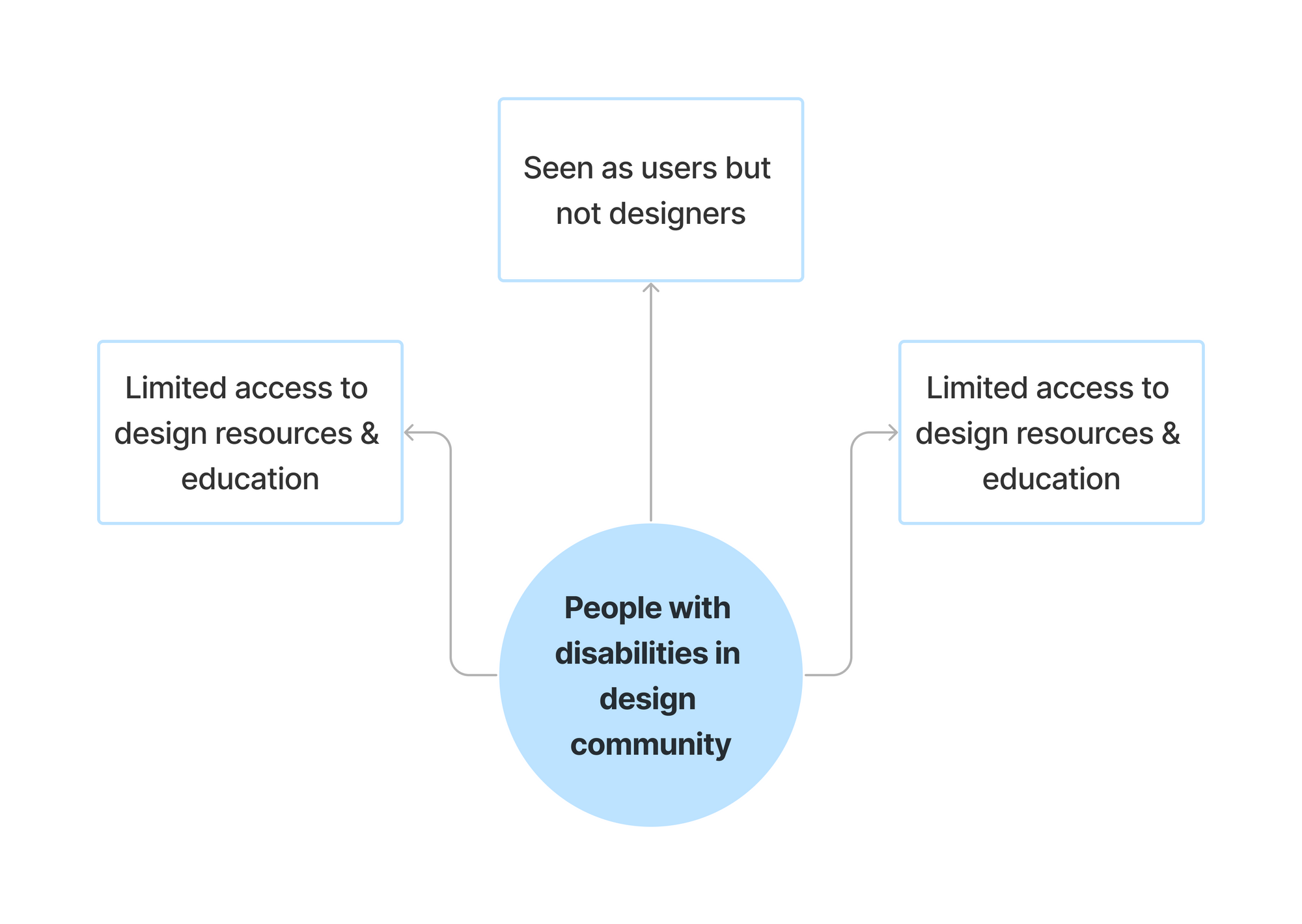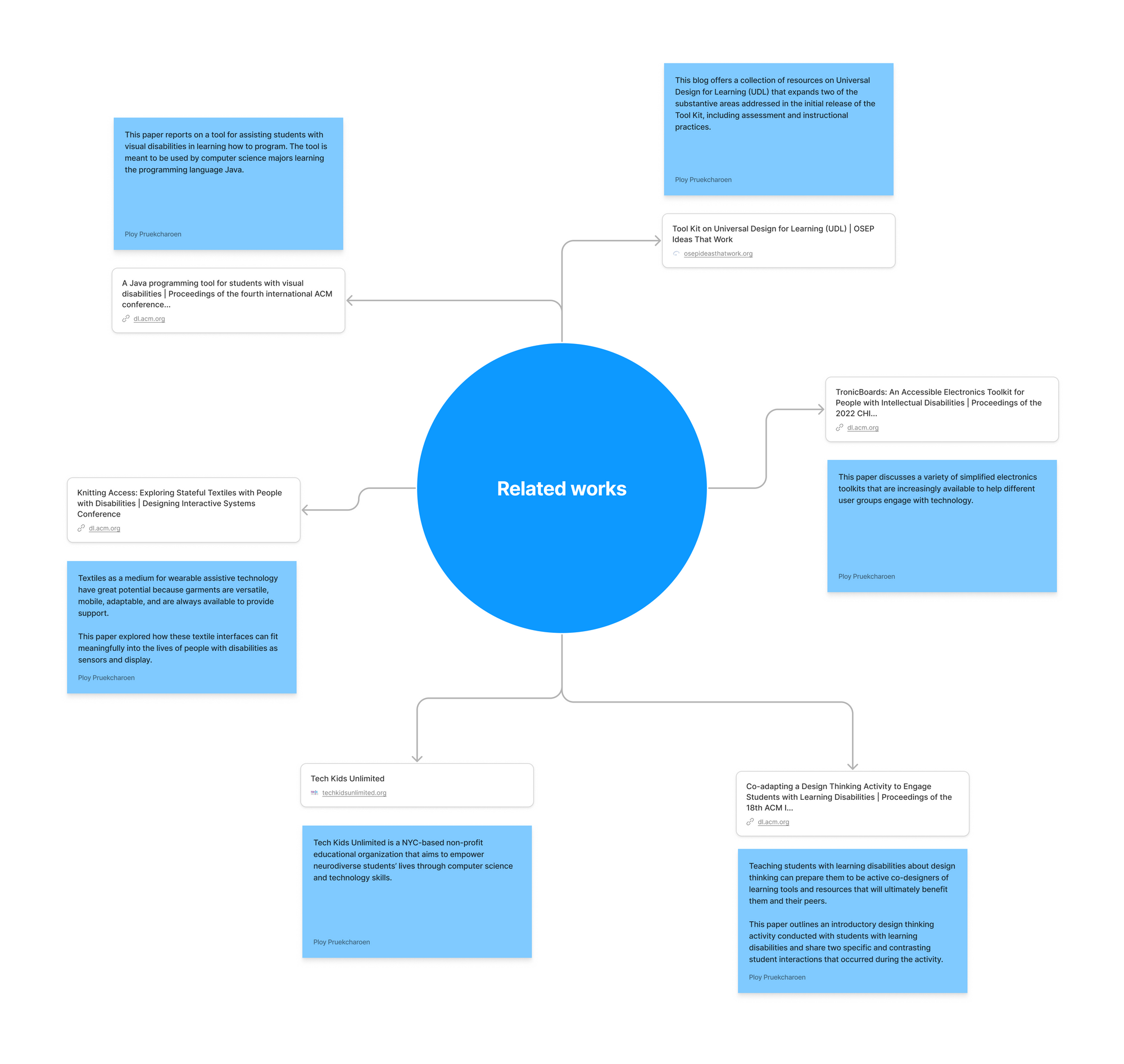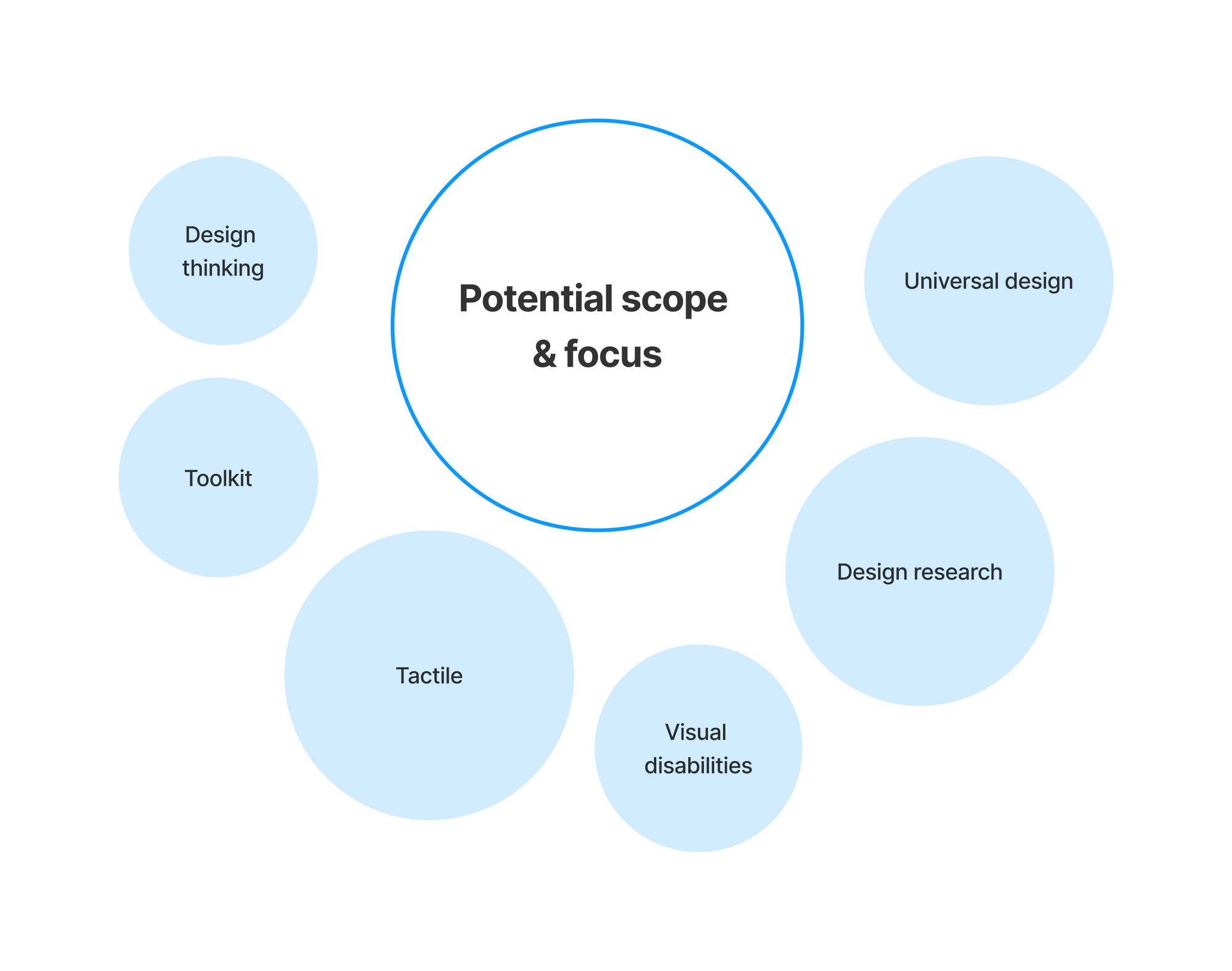This week’s assignment is to settle on a topic and conduct secondary research in the areas that I’m interested in, as a starting point for the final project. So, I started by brainstorming ideas and topics of interests.
Brainstorming
After brainstorming some ideas, I decided to do secondary research on two potential topics:
Improving accessibility in VR
Make design education more accessible for students with disabilities
Research
Problem 1: Improving accessibility in VR
Identifying accessibility issues in VR
Conducting secondary research on the topic
Problem: Current social VR applications are not accessible to people with visual impairments (PVI)
This paper discussed the topics of accessibility in virtual environment and in the real world. The authors then introduced VRBubble, an audio-based VR interaction technique to enhance the peripheral awareness of avatars in social VR for PVI, with an aim to facilitate social VR accessibility by enhancing PVI’s peripheral awareness of surrounding avatar dynamics.
Problem: For d/Deaf and hard of hearing (DHH) people, information conveyed through sound may not be accessible in VR.
The authors discussed some accessibility features for DHH users and proposed the new VR sound accessibility prototypes.
Problem: How VR can pose significant accessibility challenges to people with limited mobility.
This paper proposes Two-In-One, a design space that facilitates the creation of accessible methods for bimanual interactions in VR from unimanual input.
Use cases of VR for accessibility. The author discusses the pros and cons of virtual environments’ use cases for people with different disabilities.
Oculus’s guidelines on designing accessible VR experiences and introduction to the provided accessibility features.
Brainstorming the potential scope and focus
Problem 2: Make design education more accessible for students with disabilities
Identifying issues about people with disabilities in design community
Conducting secondary research on the topic
This paper reports on a tool for assisting students with visual disabilities in learning how to program. The tool is meant to be used by computer science majors learning the programming language Java.
This blog offers a collection of resources on Universal Design for Learning (UDL) that expands two of the substantive areas addressed in the initial release of the Tool Kit, including assessment and instructional practices.
This paper discusses a variety of simplified electronics toolkits that are increasingly available to help different user groups engage with technology.
Teaching students with learning disabilities about design thinking can prepare them to be active co-designers of learning tools and resources that will ultimately benefit them and their peers.
This paper outlines an introductory design thinking activity conducted with students with learning disabilities and share two specific and contrasting student interactions that occurred during the activity.
Tech Kids Unlimited is a NYC-based non-profit educational organization that aims to empower neurodiverse students’ lives through computer science and technology skills.
Textiles as a medium for wearable assistive technology have great potential because garments are versatile, mobile, adaptable, and are always available to provide support.
This paper explored how these textile interfaces can fit meaningfully into the lives of people with disabilities as sensors and display.
Brainstorming the potential scope and focus
Link to the full FigJam board:  Research | Ideation & Prototypingwww.figma.com
Research | Ideation & Prototypingwww.figma.com
 Research | Ideation & Prototypingwww.figma.com
Research | Ideation & Prototypingwww.figma.com
Reflection
Conducting secondary research allows me to explore the topics and at the same time narrowing the scope of the work I want to focus on. Based on the information and insights I found, I think I want to work on assistive technology or a service design that helps improve accessibility of today’s technology. Technology is growing exponentially, but I always have a question whether we have left anyone behind? Both VR technology and design education have some limitations for people with disabilities, resulting in a non-inclusive community. I want to dig into these issues in order to find some potential solutions that can improve the design and tech communities.
